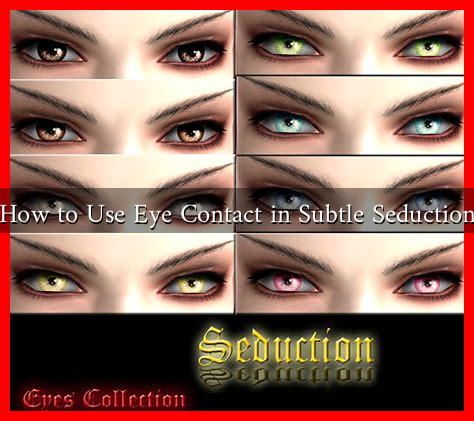-
Table of Contents
How to Use Eye Contact in Subtle Seduction
Eye contact is a powerful tool in the realm of attraction and seduction. It can convey interest, confidence, and intimacy without the need for words. Understanding how to use eye contact effectively can enhance your interpersonal interactions and create a magnetic allure. This article explores the nuances of eye contact in subtle seduction, providing insights, techniques, and examples to help you master this art.
The Psychology Behind Eye Contact
Eye contact plays a significant role in human communication. According to a study published in the journal *Psychological Science*, prolonged eye contact can increase feelings of attraction and connection between individuals. Here are some psychological aspects to consider:
- Trust and Honesty: People are more likely to perceive someone who maintains eye contact as trustworthy. This perception can create a sense of safety, making the other person more receptive to your advances.
- Emotional Connection: Eye contact can evoke emotions and create a bond. It allows individuals to share feelings non-verbally, enhancing intimacy.
- Confidence: Maintaining eye contact demonstrates self-assurance. Confident individuals are often seen as more attractive.
Techniques for Effective Eye Contact
Using eye contact effectively requires practice and awareness. Here are some techniques to help you harness its power in subtle seduction:
- The 50/70 Rule: Aim to maintain eye contact for about 50% of the time while speaking and 70% while listening. This balance shows engagement without overwhelming the other person.
- Soft Gaze: Instead of staring intensely, adopt a soft gaze. This approach feels more inviting and less intimidating, making the other person feel comfortable.
- Use the Triangle Technique: When conversing, shift your gaze between the person’s eyes and mouth, creating a triangle. This technique can enhance attraction and keep the conversation dynamic.
- Break and Reconnect: Occasionally break eye contact to avoid making the other person feel trapped. Look away briefly, then reconnect to maintain interest and intrigue.
Reading the Other Person’s Signals
Understanding how the other person responds to your eye contact is crucial. Here are some signs to look for:
- Reciprocal Eye Contact: If the other person maintains eye contact with you, it’s a positive sign of interest.
- Flushed Cheeks: Blushing can indicate attraction. If you notice this reaction, it may be a cue to deepen your engagement.
- Body Orientation: If the person leans in or turns their body towards you, it suggests they are engaged and interested in the interaction.
Case Studies and Real-Life Examples
Numerous studies and real-life scenarios illustrate the effectiveness of eye contact in seduction. For instance, a study conducted by the University of California found that couples who maintained eye contact during conversations reported higher levels of intimacy and satisfaction in their relationships. Additionally, many successful public speakers and performers utilize eye contact to captivate their audience, demonstrating its universal appeal.
In a social setting, consider the example of a bar or party. When you lock eyes with someone across the room, the initial spark can lead to a conversation that may not have happened otherwise. The key is to approach with confidence and maintain that subtle yet engaging eye contact.
Conclusion: Mastering the Art of Eye Contact
Eye contact is an essential component of subtle seduction. By understanding its psychological impact, employing effective techniques, and reading the other person’s signals, you can enhance your ability to attract and connect with others. Remember to practice the 50/70 rule, use a soft gaze, and be mindful of the other person’s reactions. With these strategies, you can master the art of eye contact and create meaningful connections that go beyond words.
For further reading on the psychology of attraction and communication, consider exploring resources like Psychology Today.

